Transplante de planta de Plátano y cambur. Tips [Esp/Eng]
Hola amigos, espero que la estén pasando de lo mejor, y les envío un saludo muy especial desde mi país Venezuela 🇻🇪.
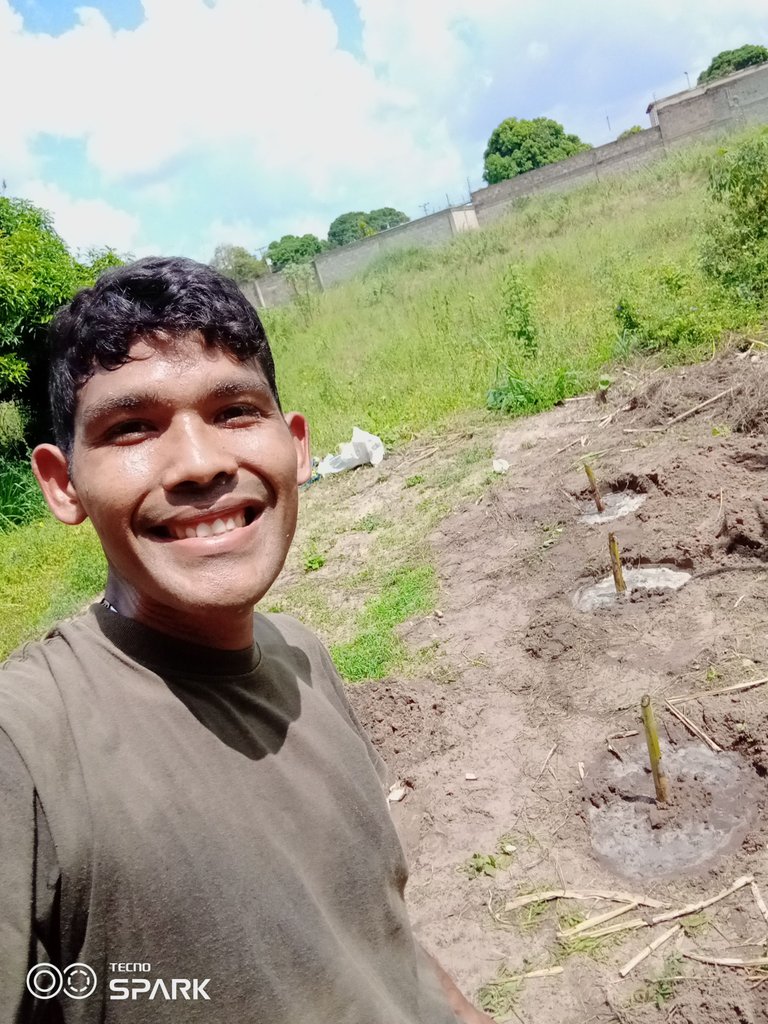
Quería compartir con ustedes de una nueva siembra que tenía que hacer y que desde hace mucho tiempo tenía planeada, ya que he estado observando las informaciones sobre el clima, y al parecer las lluvia de invierno se extenderán hasta febrero.
Por lo que quise aprovechar para sembrar unas plantas de plátano y cambur.
Cómo verán en esa imagen, hice un transplante de unas que ya estaban en la huerta, pero estaban mal ubicadas.
Además estaban un poco descuidadas, por lo era necesario cambiarlas de lugar y darle mantenimiento.

En este tipo de casos, es necesario cortar el tronco de la planta para que crezca con una nueva guía o tallo, y para que este sana y crezca con mejor fundamentos.
Así que además de cortarla, le hice una pequeña limpieza para prepararla.
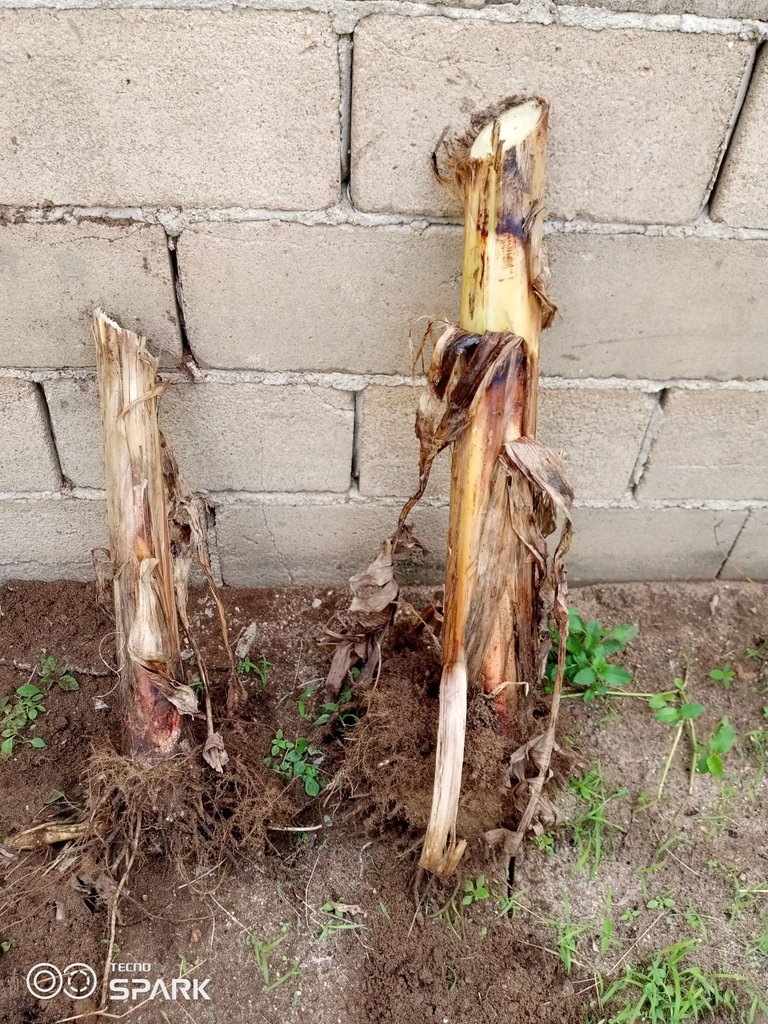
Por qué es necesario?
Pues lo que quiero es que a diferencia de antes, la planta se desarrolle casi que desde el inicio y eso lo logrará, con una buena limpieza, así como le hice.

También es de vital importancia podar las raíces, para que las nuevas que salgan, también lo hagan sanas y creen nuevos fundamentos

Una vez listo el podaje y la limpieza, procedí a medir las dimensiones o el espacio.
Esto porque queremos que la planta tenga suficiente espacio para crecer, y también para que cuando den hijos o semillas futuras, sean un poco más fácil de acceso para trasplantar.
Una idea sería darle 1.50mts por 1.50mts, aunque se podría darle más.
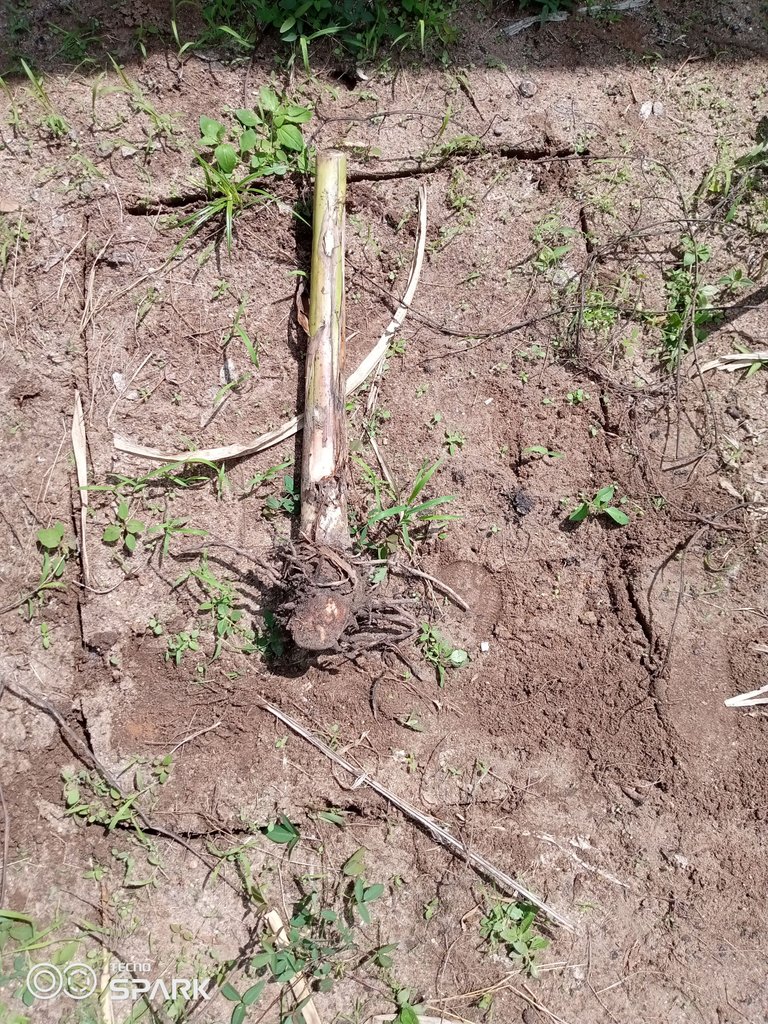
La apertura del orificio dónde sembraremos nuestra planta, dependerá del tamaño a dónde le hallamos cortado el tallo.
Pero sea como sea, es bueno que el nivel del orificio quede a casi la mitad del tallo que hemos cortado.
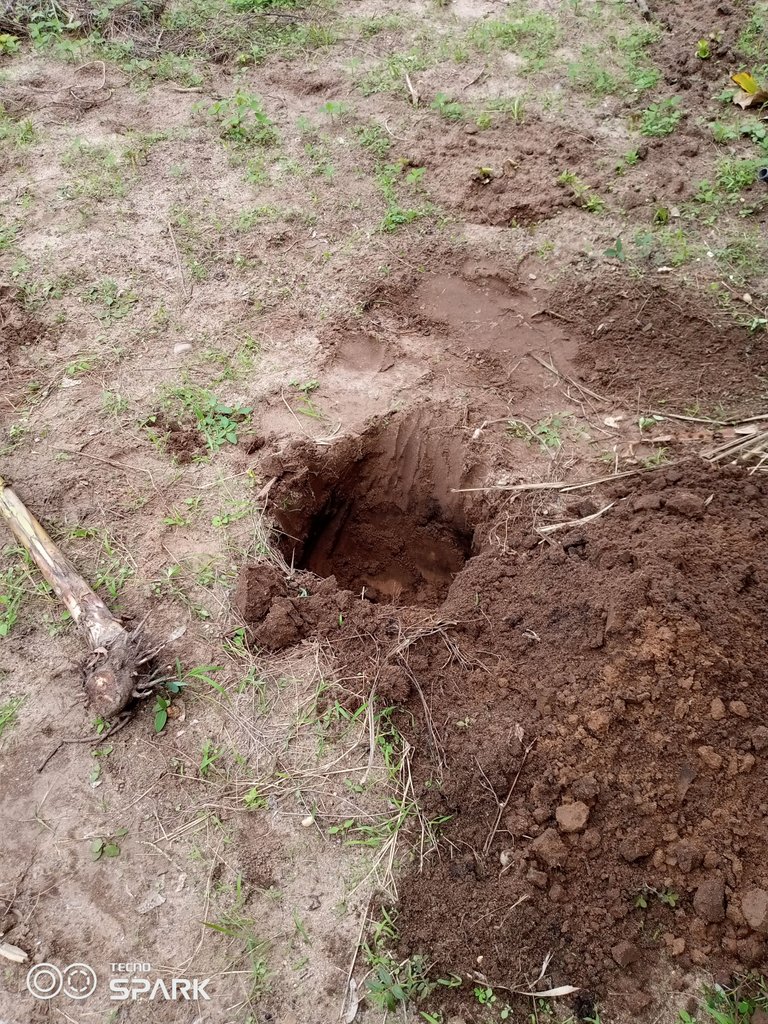
Ya después de introducir el tallo, utilice un abono que es comercial, pero es bastante bueno.
Esto lo agregué a las raíces o al final, ya que quiero que estás se peguen lo más pronto e inicien el proceso de enraizar lo antes posible.
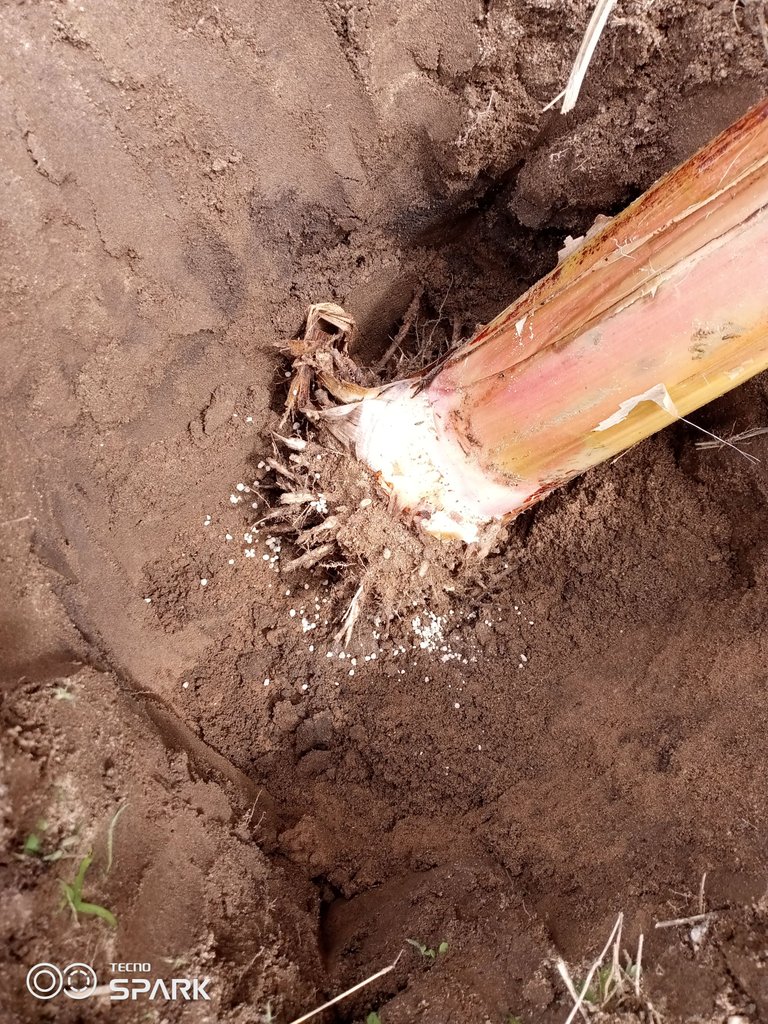
Este es el abono.
Se llama triple 15, ya que contiene Potasio, Calcio y Fósforo.
Estos 3 componentes, son fundamentales para cualquier clase de planta, tanto en crecimiento así como en momento de cosecha.
En este caso, ya está un poco viejo y se ha mojado, pero servirá para dar un poco de fuerza.
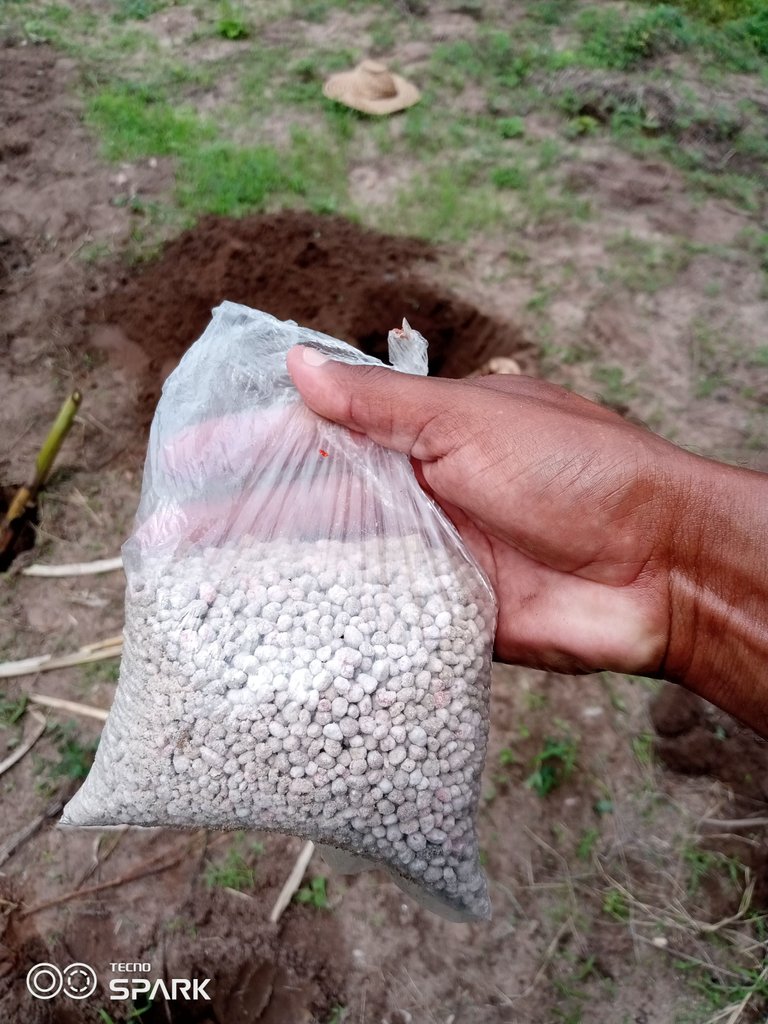
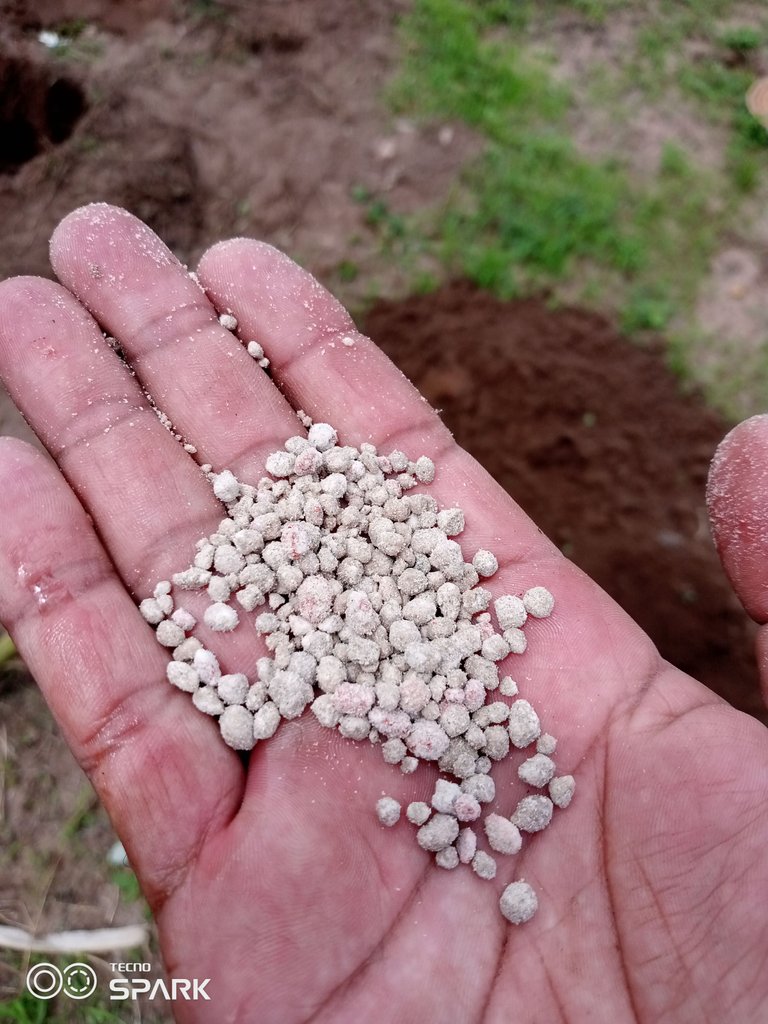
Después de agregarle el abono, recomiendo colocarle agua allí mismo, esto para que la planta este humedecida, y en los días que vengan, ella pueda estar tranquila pues está nutrida y fresca, y pueda soportar los embates del sol, aunque de por sí, está planta es muy resistente.
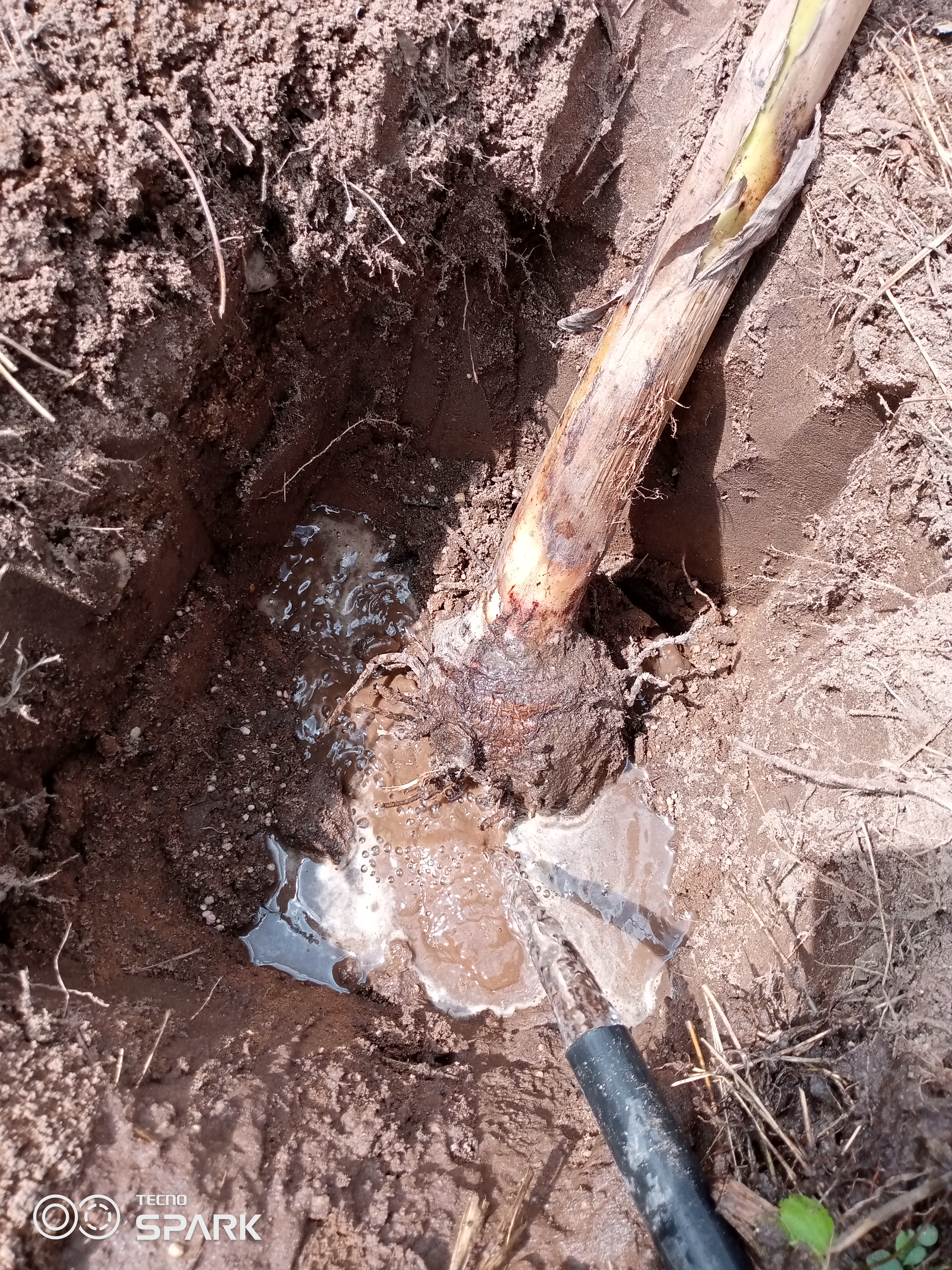
Incluso después de haberla cubierto con tierra, es necesario colocarle agua nuevamente para que se refresque nuestra planta.
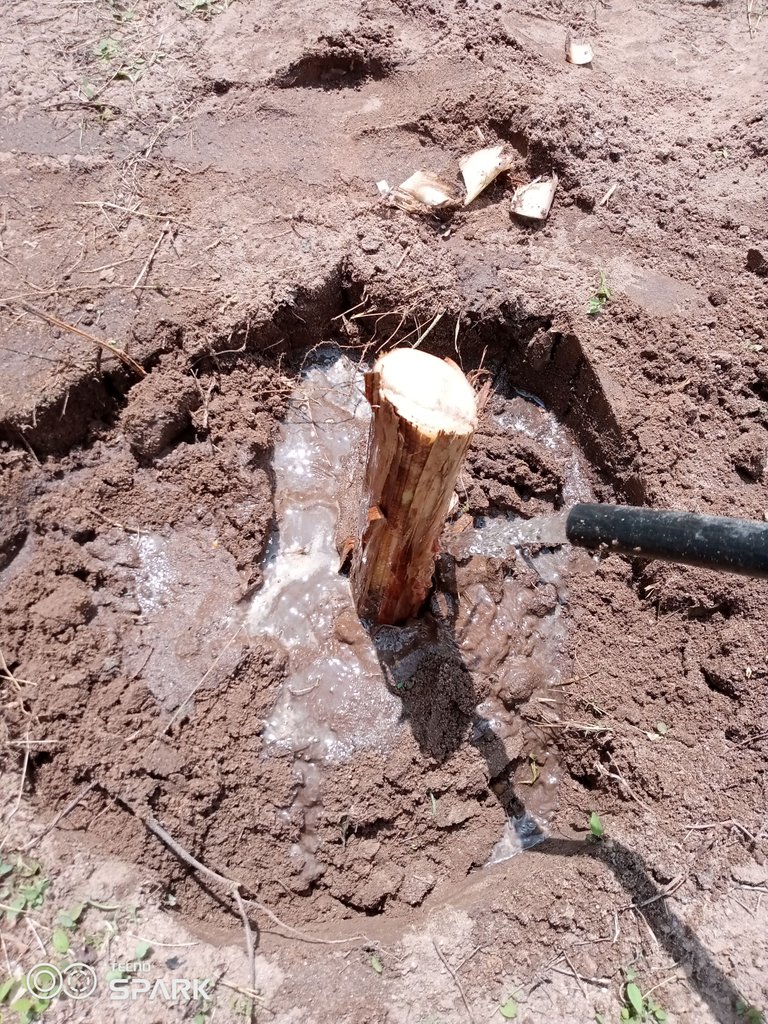
Bien amigos, sino tienen un abono comercial, también en cualquier sitio de jardinería, pueden comprar un poco de abono orgánico, y también pueden colocarle humus de lombriz, recuerden que lo natural siempre será lo mejor. Yo utilice éste, porque ya casi se dañaba y quise darle uso.
Espero que les sirve la información, les envío un cálido abrazo, y espero tengan una bonita semana, y que arranquen con un buen pie este mes.

Hello friends, I hope you are having a great time, and I send you a very special greeting from my country Venezuela 🇻🇪.

I wanted to share with you a new planting that I had to do and that I had been planning for a long time, since I have been watching the information about the weather, and it seems that the winter rains will extend until February.
So I wanted to take the opportunity to plant some banana and cambur plants.
As you can see in this picture, I transplanted some plants that were already in the garden, but they were badly placed.
They were also a bit neglected, so it was necessary to change their location and give them some maintenance.

In this type of cases, it is necessary to cut the trunk of the plant so that it grows with a new guide or stem, and so that it is healthy and grows with better foundations.
So in addition to cutting it, I did a little cleaning to prepare it.

Why is it necessary?
Well, what I want is that unlike before, the plant develops almost from the beginning and that will be achieved with a good cleaning, as I did.

También es de vital importancia podar las raíces, para que las nuevas que salgan, también lo hagan sanas y creen nuevos fundamentos

Once the pruning and cleaning was done, I proceeded to measure the dimensions or space.
This is because we want the plant to have enough space to grow, and also so that when they give children or future seeds, they will be a little easier to access for transplanting.
An idea would be to give it 1.50mts by 1.50mts, although we could give it more.

The opening of the hole where we will sow our plant, will depend on the size where we have cut the stem.
But in any case, it is good that the level of the hole is almost half of the stem that we have cut.

Already after introducing the stem, I used a fertilizer that is commercial, but it is quite good.
I added this to the roots or at the end, since I want them to stick as soon as possible and start the rooting process as soon as possible.

This is the fertilizer.
It is called triple 15, because it contains Potassium, Calcium and Phosphorus.
These 3 components are essential for any kind of plant, both in growth as well as at harvest time.
In this case, it is already a little old and has gotten wet, but it will serve to give a little strength to the plant.


After adding the fertilizer, I recommend placing water right there, so that the plant is moistened, and in the days to come, it can be calm because it is nourished and fresh, and can withstand the onslaught of the sun, although in itself, this plant is very resistant.

Even after covering it with soil, it is necessary to add water again to refresh the plant.

Well friends, if you don't have a commercial fertilizer, you can also buy some organic fertilizer in any gardening store, and you can also use worm humus, remember that natural is always the best. I used this one, because it was almost damaged and I wanted to use it.
I hope you find the information useful, I send you a warm hug, and I hope you have a nice week, and that you start this month with a good foot.
!discovery 40
This post was shared and voted inside the discord by the curators team of discovery-it
Join our community! hive-193212
Discovery-it is also a Witness, vote for us here
Delegate to us for passive income. Check our 80% fee-back Program
Está genial esta publicación, querido @ismaelrd04 . Mi madre tiene muchas matas de plátano y cambur en el campo. Son de los frutos de la tierra más deliciosos. Gracias por compartir tu experiencia y conocimiento. Un abrazote! 🤗😘
Gachas por pasar mi querida Mary, te reenvío 100 abrazos 😊😊